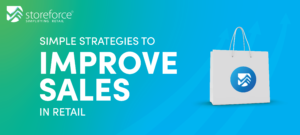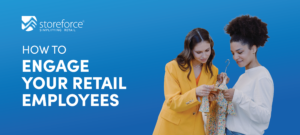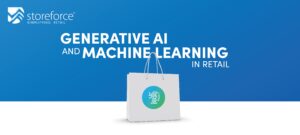Blog Category
Stores as ‘Markets’ in the World of Unified Commerce
January 22, 2018 in Thought Leadership, Unified Commerce

In a Unified Commerce world, Stores should be thought of as Markets. And the technology supporting the stores and head office needs to embrace and leverage this view in order to enable effective decision making.
The Brick and Mortar Store Remains the Retailer’s Single Most
Important Brand Touchpoint
Customers spend more time making an in-store purchase than an online purchase, and the in-store experience is personal and physical. In Unified Commerce, there are generally two avenues to demand generation (store and online). Two avenues to order fulfillment (instant at the Store or delayed via a shipment from DC/another Store). And, two avenues for returns (Store and ship-to-DC). To address the various combinations of demand generation, fulfillment, and return options, Retailers should look at the Store as a Market.
This means:
- Ascribing a Market (Store) to each online sale based on geolocation,
- Having multiple sales ‘views’ for a Store: (a) brick and mortar sales, (b) market online sales, and (c) an aggregated total market sales; and
- Tracking both sales and return metrics for each view.
A Store that Excels at Being a Brand Ambassador Will See a Lift in Their Aggregated Market Sales
A Store that excels at being a brand ambassador will see a lift in their aggregated Market sales, even if their brick and mortar sales are declining.
Measuring how this shift is occurring in each Market allows Field Managers to make better, more informed decisions on performance opportunities. There is built-in friction between brick and mortar and e-commerce channels, and it will be important to align goals to drive performance across all channels.
E-commerce is viewed as the rising star with annual double-digit growth, while declining traffic at brick and mortar Stores can lead to year over year comp brick and mortar decreases. Further, some more antiquated POS systems can’t separate returns generated by the store versus returns generated by online purchases. When e-commerce sales ranged between 1 and 5% of a Retailer’s sales, the headaches caused at Store level were barely noticeable – now that the percentage of online sales has increased significantly, the impact of online returns on a Store’s sales (if not separated out) is so material that Store Managers are worried about losing their bonuses as a result of online returns at their store.
The Ability to Align Goals Relies on How a Retailer Will Use Technology to Measure and Reward Performance Within Each of the Channels
While the jury is still out on some of the finer details, the trends we see are two-fold:
- More Retailers are shifting towards rewarding Stores for demand generation, regardless of the method of fulfillment; and
- The old method of expecting Stores to deal with external fulfillment (both click & collect and ship from store) out of existing labor budgets has given way to selectively adding labor hours based on a combination of an external fulfillment forecast as well as each Store’s available capacity to address orders within the existing labor budget.
Sales Performance Coaching and Reporting Technology will Need to Break Down the Data Down to View Stores as a Markets.
Technology, specifically sales performance coaching and reporting technology, will need to break down the data down to view Stores as a Markets.
This will give Retailers the ability to understand both the impact and the relevance of Stores in a Unified Commerce World, and ultimately drive the performance and customer experience needed that will allow them to continue to compete and thrive.
Recent Blog Posts

How to Improve Sales in Retail | Simple Strategies
How can you enhance your retail sales and drive growth for your business Here are some ways you can improve your retail sales How Can I Improve Sales in Retail Stores You can...
READ MORE
How to Engage Your Retail Employees | Simple Strategies
In the retail industry, employee engagement is essential to overall business success But how can employers engage their retail employees effectively How To Engage Retail Employees The first...
READ MORE
The Impact of Machine Learning and Generative AI in Retail
Staying ahead of the competition requires embracing cutting-edge technologies Machine Learning (ML) and Generative Artificial Intelligence (AI) have emerged as game-changers, revolutionizing the...
READ MORESchedule a Consultation With Our Retail Experts Today
Contact us today for a 15-minute conversation on how StoreForce can help you drive store performance and execution for less than the cost of 1 transaction per week. Learn how retailers all over the world are driving performance and customer experience through our solution made exclusively for Specialty Retail.